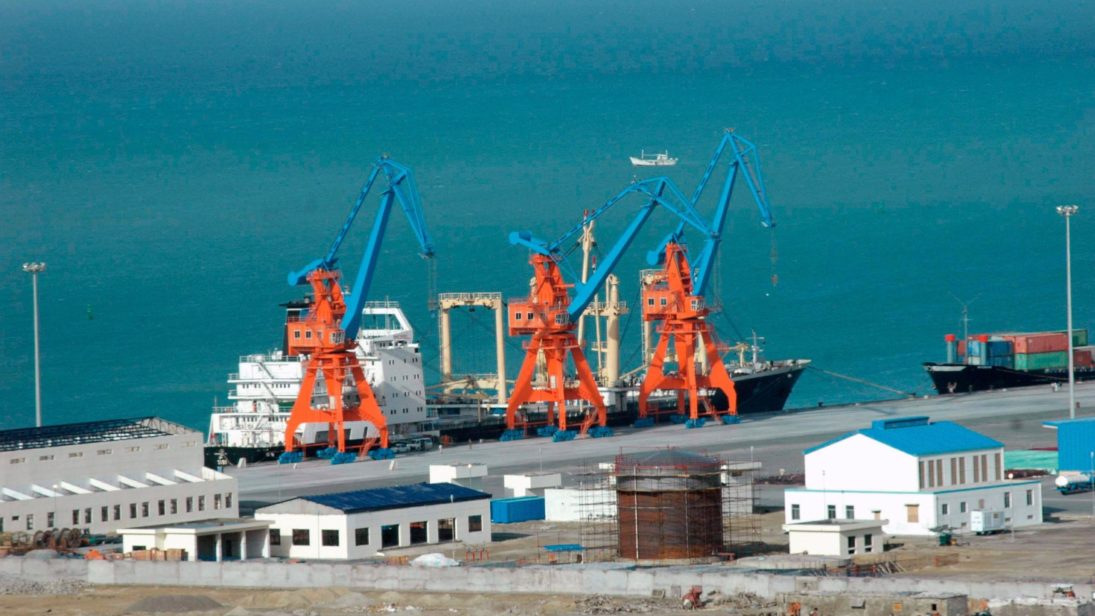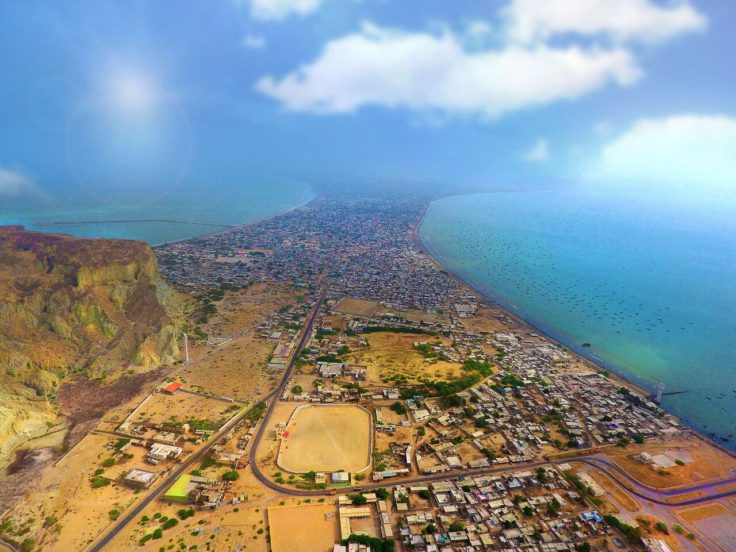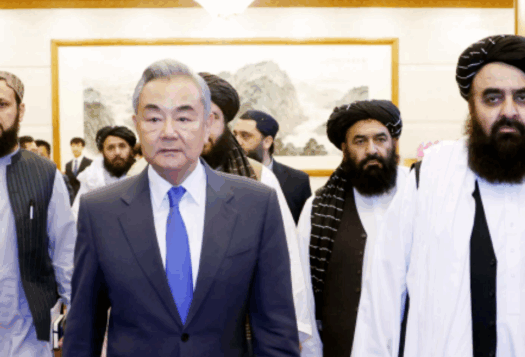
On November 5, Balochistan’s Chief Minister Jam Kamal Khan attended the 9th Joint Cooperation Committee (JCC) meeting in Islamabad, in which the Gwadar Master Plan was approved and signed. Yet, the ground realities suggest CPEC projects in Balochistan, including New Gwadar International Airport and the Gwadar port project, have slowed down over the years. Officially, however, Pakistani and Chinese officials deny anything of the sort.
Due to its strategic location and immense natural wealth, the port city of Gwadar has been center of attraction for the region—often touted as the “crown jewel” of CPEC. Although Gwadar’s importance has been magnified by Pakistan in order to attract investors, Gwadar’s deep-sea port is also economically and strategically important due to its proximity to the Strait of Hormuz, one of the world’s busiest shipping routes. This strategic importance has driven Chinese interest in the project. Because of the dual interest in the success of the Gwadar port project, it is seen as the backbone of CPEC. However, representative of a broader lag in CPEC, in recent years CPEC projects in Balochistan have slowed down and ignored much of the province outside Gwadar. If the government of Pakistan wants CPEC to succeed, it will need to spark reinvestment in Balochistan.
However, representative of a broader lag in CPEC, in recent years CPEC projects in Balochistan have slowed down and ignored much of the province outside Gwadar. If the government of Pakistan wants CPEC to succeed, it will need to spark reinvestment in Balochistan.
From PML-N to PTI: Fears of a CPEC Slowdown
The Nawaz Sharif government often heralded CPEC as a “game changer” for Pakistan, and under the former Prime Minister China-Pakistan relations were largely positive. In part, because Sharif’s government did whatever it could to ensure smooth relations with the Chinese and the success of CPEC projects in Pakistan. Sharif’s government, however, was also criticized for corruption and a lack of transparency surround CPEC projects. Many CPEC projects were also being implemented in the Punjab province—the epicenter of PML-N voters—instead of in Balochistan. Both China and domestic audiences complained about the effect that corruption was having on CPEC projects in Pakistan. In 2015, Daud Khan Achakzai, the then Senator from Balochistan, called CPEC “the China-Punjab Economic Corridor, because it will mainly benefit Punjab and not the other provinces.”
Pakistan’s Tehreek-e-Insaaf (PTI), led by now Prime Minister Imran Khan, have long been critical of Nawaz Sharif and his party regarding CPEC. In 2014, Imran Khan’s five month long Azadi March in Islamabad forced President Xi Jinping to postpone his visit to Pakistan—delaying the launch of CPEC. Additionally, when Prime Minister Khan took office in 2018, the memory of these protests led Chinese officials to wonder how welcoming the new PTI government would be of CPEC agreements negotiated under the Sharif government.
The implementation of CPEC projects in Balochistan and elsewhere in the country have reportedly slowed down since Imran Khan took office. Early into Khan’s administration, one of his top advisors, Abdul Razak Dawood, even hinted at rethinking Chinese investments in the country. In an interview he said, “the previous government did a bad job negotiating with China on CPEC—they didn’t do their homework correctly and didn’t negotiate correctly so they gave away a lot,” and claimed a committee set up by the Prime Minister would think through CPEC’s “benefits and liabilities.” Although these comments were walked back by the Khan administration, who claimed that Dawood’s remarks were taken out of context, such criticism may make China more cautious about future investment in of CPEC projects in Pakistan.
However, the efforts by the Khan administration to not offend China in the process of reevaluating CPEC may reflect a growing awareness of the potential consequences of Pakistan being heavily indebted to China. Regionally, fears of Chinese “neocolonialism” may be compelling governments to either suspend or reconsider some of the Chinese investments and BRI projects in their respective countries. In Pakistan, these fears may be a turning point, leading the PTI government to explore alternatives in order become less economically dependent on China. Recently Pakistan diverted (or stole according to some) approximately USD $171.6 million to non-CPEC related infrastructure projects. The money, however, was part of $62 billion given to Pakistan by China for CPEC specific infrastructure projects.
Despite apparent wariness regarding CPEC, the Imran Khan government seems to have taken steps to assuage China’s concerns. After Khan’s third visit to China, he brought former Finance Minister Asad Umar—who has previously defended CPEC—back into his cabinet as the Minister for Planning and Development. Although Umar has denied that work on CPEC projects has slowed down, some argue that the sole reason he was brought back was to improve the implementation of CPEC and address Chinese reservations.

Balochistan’s Frustration
More than the other provinces of Pakistan, Balochistan has faced the brunt of bottlenecks of CPEC projects. There has not been enough development work in Gwadar, let alone other parts of the province. Instead of new CPEC projects, old development works in Balochistan have been renamed as part of CPEC. For instance, the N-85 road running from Gwadar to Quetta through Panjgur has claimed as part of the CPEC network of roads and highlighted on the CPEC website as part of the western alignment route. In reality, N-85 was constructed before the announcement of CPEC and was “never a part of the CPEC road system.”
Additionally, in 2015 former Prime Minister Nawaz Sharif inaugurated a pair of highway projects (the N-50 and N-70) funded by Asian Development Bank in Balochistan, which he claimed were part of the western route of CPEC. However, these projects had little to do with CPEC, and time has shown that there is no such CPEC western route. The government of Balochistan’s CPEC Cell, established with assistance from the World Bank, recently reported that outside of Gwadar there had been no progress on the western route, and that “more than half of the Balochistan component of the western route is still not officially part of the CPEC agenda.”
The government of Balochistan’s CPEC Cell, established with assistance from the World Bank, recently reported that outside of Gwadar there had been no progress on the western route, and that “more than half of the Balochistan component of the western route is still not officially part of the CPEC agenda.”
The current provincial government of Chief Minister of Balochistan Jam Kamal Khan Alyani, despite being the ally of the ruling PTI government, is outraged for not being given the “due share” in the CPEC projects. Through media and other platforms in Quetta (the provincial capital of Balochistan) and Islamabad, officials of the Balochistan government have conveyed their concerns that Balochistan is being ignored by CPEC. Indeed, that even government officials themselves are frustrated with the lack of development is a bad omen for future investments in Pakistan’s largest province.
The continued threat of violence against CPEC projects by Baloch nationalists may further stymie investment in the region. Baloch nationalists, including the moderate ones, are critical of CPEC projects. Through media and other such platforms, they have expressed their reservations about CPEC—stating that CPEC is going to turn the Baloch people into an ethnic minority in their own province. Due to these reservations and other grievances, hardcore Baloch nationalists—including the separatist Balochistan Liberation Army (BLA)—have carried out attacks on security forces in Balochistan’s coastal belt, and increasingly Chinese assets. The hope is to dissuade China from investing in CPEC projects in Balochistan by making the cost of building there (i.e. having to counter attacks from Baloch nationalists) too high. Although previous attacks by Baloch nationalists against Chinese nationals have been carried out elsewhere in Balochistan, the recent attack on May 11th of this year on the Pearl Continental hotel, in which five people were killed, was in the heart of Gwadar. Called by Pakistan’s Prime Minister as an effort to “sabotage prosperity,” the attack was intended to demonstrate that Baloch nationalists could attack the centerpiece of Chinese investments in Pakistan.
Conclusion
The Gwadar port project specifically, and infrastructure projects in Balochistan more generally, comprise the backbone of the CPEC infrastructure projects in Pakistan, despite the province receiving a minuscule amount of the total investment under CPEC projects. Balochistan accounts for almost half of Pakistan, and if the government of Pakistan ignores investment a significant section of Pakistan is deprived and underdeveloped. Further, ignoring Balochistan means turning a deaf ear to other potential future investments in the country, as CPEC’s success is linked to prosperity and connectivity in Balochistan. If the “crown jewel” of CPEC is being ignored, it is indicative of why CPEC overall is slowing down. If the government in Pakistan wants CPEC to be successful, it needs to first start by reengaging with development in Balochistan.
***
Image 1: Government of Pakistan via Twitter
Image 2: Government of Pakistan via Twitter


